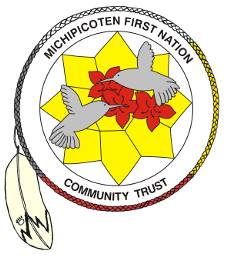Michipicoten First Nation (MFN) was the first to begin a new and innovative approach to resolving multiple land claims by a single First Nation.
“We want to build on your strengths and develop the real potential of these lands and of our peoples, but in order to do so we need to clear up our historic grievances with Canada and regain control of as much of our land as possible.” – MFN Chief Sam Stone (1996).
MFN began working together collaboratively with Indian and Northern Affairs in 1997, to resolve multiple specific land claims of the Michipicoten First Nation. The pilot project was designed to improve the specific land claim process, saving time and money and building better relationships between Canada and First Nations.
In 1850, Ojibway Chief Totononai signed the Robinson Superior Treaty on behalf of his people, gaining, in return, a promise from Canada to survey and set aside a reserve for the Michipicoten in the Gros Cap area. It was brought to Indian and Northern Affairs attention by former Chief Sam Stone that the Michipicoten First Nation had lost and gained reserve land and how villages have been relocated several times, raising nine potential specific claims.
The Algoma Claims were about surrenders of Reserve land in 1855, 1899, and 1900 that Canada agrees were all invalid. All of the surrendered land, totalling 2,111 acres, ended up in the hands of the Algoma group of companies, so the claims were negotiated together through the Michipicoten Pilot Project.
On June 24, 2003, the members were advised that there were three significant developments. First, a date for the referendum had been agreed upon – November 1, 2003. Secondly, it had been agreed upon that there were would be a cash payment of $2,000 to each and every member who is alive on the day of the vote. Money for children would be held in the Trust Fund, with interest, until their 18th birthday. Thirdly, the first round of consultation meetings with members was completed on the Reserve, in Sudbury and in Sault Ste. Marie.
The Settlement Agreement provided for net compensation of $11,685,240 that was paid into a Trust Fund. This figure was arrived at by adding the value of the land (about $2 million) to be negotiated amounts for lost rent ($5 million), lost forestry income ($3 million) and other losses including lost opportunities ($1.7 million).
The Settlement Agreement contained provisions to fully and finally settle the three Algoma Claims from a legal perspective, which was the objective of the Pilot Project. Therefore, in exchange for the compensation, Michipicoten agreed to never take Canada to court in the future over these claims.
The Settlement Agreement had provisions to clarify the title of the 2,111 acres covered by the invalid surrenders. The provisions made had Michipicoten giving up all historic claims to the land in exchange for the compensation, but will not prevent Michipicoten from buying back some or all of the claim land and having it returned to the Reserve.
The Trust fund was set up and operated according to the rules approved by the members. The Trust Fund will last more than 100 years and provide long-term benefits for ALL Michipicoten members, no matter where they live (on and off-reserve).
A Board of Trustees was appointed for the administrating of the Trust Fund. Members of the Trust must be band members, must be 25 years or older, and must not be part of the Chief and Council.
The Trust Agreement specifies that there is to be nine Trustees on the Board, five of which must always be from on reserve, and one who is a legal representative.
Michipicoten First Nation Trust Agreement (2003)
Logo Design And Meaning
 In 2004, the Trust had a logo contest that involved the membership. Upon review of the logo entries, the Trust selected the logo that was submitted by community member Roberta Day. The logo embraces the teachings of the hummingbird. Hummingbirds are commonly seen in our community.
In 2004, the Trust had a logo contest that involved the membership. Upon review of the logo entries, the Trust selected the logo that was submitted by community member Roberta Day. The logo embraces the teachings of the hummingbird. Hummingbirds are commonly seen in our community.
The hummingbird represents Love/Joy. The tiniest of all birds, it brings special messages for us. It is the only creature that can stop dead while travelling at full speed. It can hover, go forward, backward, up or down. The hummingbird is loved by the flowers and plants, for as it sucks the nectar from the flower, the plant reproduces and more of its kind are created.
It is said that the hummingbird brings love as no other medicine can and its presence brings joy to the observer.
If you have hummingbird medicine, you adapt easily to whatever situation you might find yourself in and make the most of your new circumstances. You take great pleasure in spreading joy, love and beauty to all around you and have the gift of taking that inner joy into new and different surroundings.

